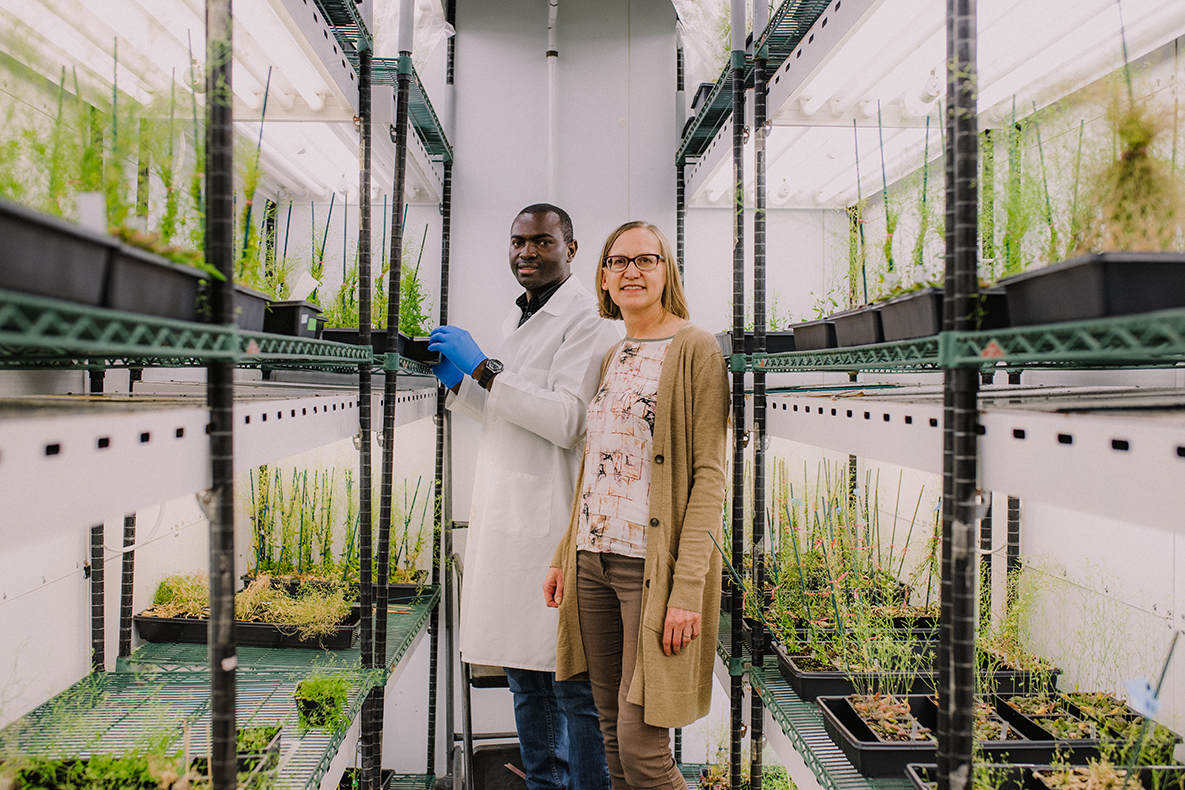In 2001, the scientific community hadn't yet confirmed many molecular details about plant autophagy. Decades earlier, the process had been discovered in animals. But the earth’s 391,000 plant species — from soaring redwoods and fragrant gardenias, to microscopic plankton — had yet to reveal which genes and intracellular activities were controlling this vital plant digestive process.
That same year, plant scientist Diane Bassham pitched a bold idea as she interviewed for a faculty-research position in the Department of Genetics, Development and Cell Biology at Iowa State University. Bassham proposed that her primary research project would focus on searching for plant autophagy, with the goal of someday discovering the genes that controlled the process.
It was a risk that Iowa State University was willing to take. Bassham landed the job.
“This definitely was very risky research and no researchers were studying plant autophagy at that time,” Bassham said. “I’m grateful that Iowa State gave me the support and the time to explore my hunches about autophagy.”
Bassham’s hunches were correct.
Autophagy was happening in plants and many genes were involved. The process had been occurring in all plants, at every stage of development — from seed, to sapling to adult phase — for millions of years, long before the first dinosaurs nibbled on prehistoric ferns.
What is autophagy and why does it matter?
Plant autophagy is a digestive process which transports waste into bubble-like structures called vacuoles. The vacuoles deploy the waste into the cellular cytoplasm where it is broken down and converted into useful materials that feed, repair and sustain the plant.
“Autophagy is like a plant’s recycling program,” Bassham said. “When environmental stressors, like drought or heat, bombard plants with cell damage, autophagy digests and recycles those damaged parts. It’s damage clearance that helps plant cells survive.”
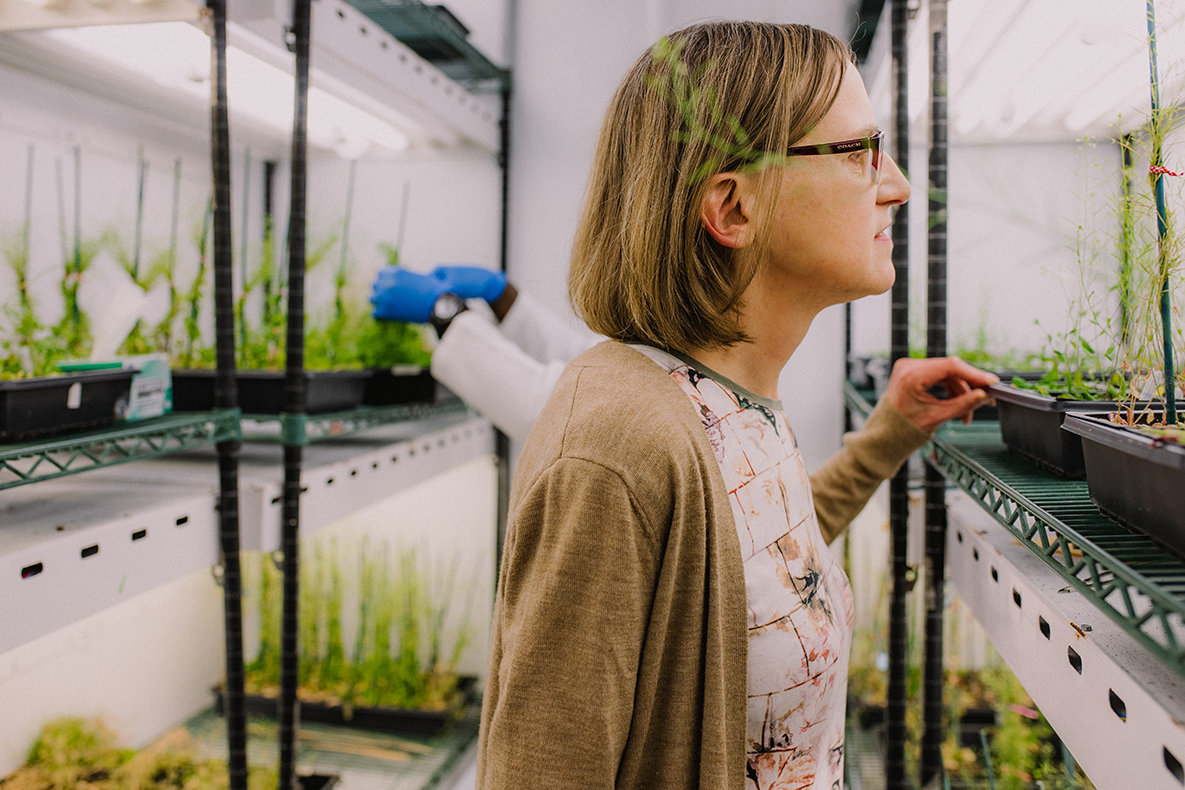
Unlike animals, plants can’t escape to higher ground during a flood or wander toward a shade tree during torturous heat. They must adjust. A brilliant evolutionary adaptation, autophagy enables plants to withstand — and even heal from — the Earth’s unforgiving environmental challenges.
Without autophagy, plants in less-than-ideal circumstances would quickly die — leaving our gardens barren, our hydrangeas withered and our food chain in certain peril.
“Autophagy is one of the most important processes in plants and Diane Bassham was one of the first researchers to study the process,” said Yanhai Yin, professor and chair of the Department of Genetics, Development and Cell Biology. “Diane’s research during the past 20 years has established her as a pioneer in the field of plant autophagy.”
Branching out from vacuoles
As a young scientist, Bassham studied plant vacuoles at Michigan State University. She published an impressive body of research on the inner-workings of vacuoles and the proteins that function within them.
“It's important to give scientists time to see where the research leads, especially when they’re trying to understand basic cell processes.”
Then two scientific breakthroughs detoured her research path and steered her toward autophagy. In 1992, Yoshinori Ohsumi, a Japanese biologist, found a constellation of genes that controlled autophagy in a yeast model.
“Ohsumi’s work changed everything because the world now knew what autophagy genes looked like,” Bassham said. “The discovery allowed researchers like myself to look for similar genes in the organisms they were studying.”
In Bassham’s case, that organism was Arabidopsis, a leafy, upright plant. This member of the mustard family, with its green and purple-tinged leaves, has been Bassham’s model plant for 20 years.
“Arabidopsis and I are like old friends,” Bassham said. “My team and I have planted, raised and studied thousands of Arabidopsis through the years.”
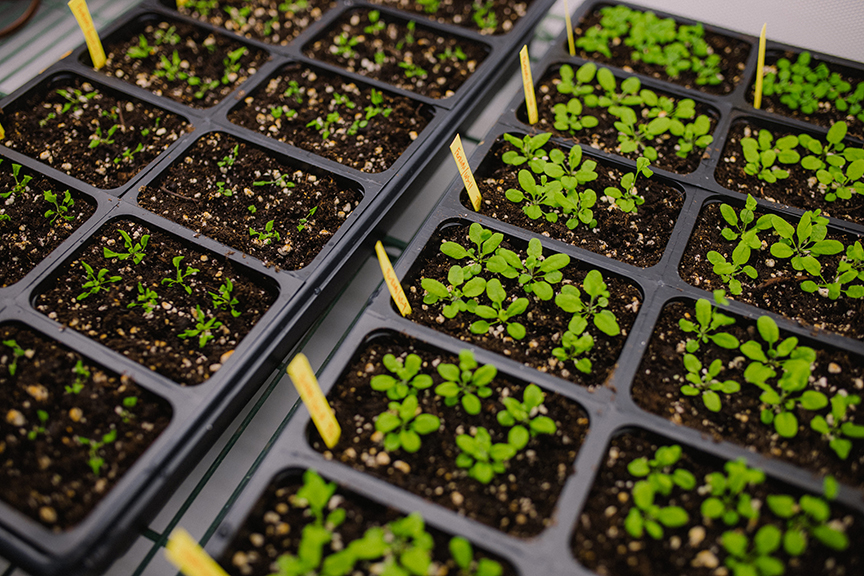
In 2000, a second breakthrough occurred. Plant scientists fully sequenced the Arabidopsis genome. This development was the equivalent of handing Bassham a treasure map. Finally, she could search the Arabidopsis genome for the undiscovered autophagy genes.
“The hard work of searching for those genes could finally begin, and that was the case I made during my faculty interview,” Bassham said. “We had the genome. We knew what the genes looked like. This research was now possible.”
New digs
In 2001, Bassham settled into a new job and a new lab in Bessey Hall, preparing herself for the long journey of peaks and valleys that often accompany high-risk, high-reward research.
“You can’t predict what research is going to be useful and what research is not, because in the beginning, you just don’t know enough,” Bassham said. “That’s why it’s important to give scientists time to see where the research leads, especially when they’re trying to understand basic cell processes.”
A few researchers outside of Bassham’s lab began researching autophagy during this time. When you’re one of only three research teams in the world studying a particular topic, the rewards and challenges are magnified.
“It was incredibly exciting because hardly anyone was looking at plant autophagy,” Bassham said. “But the area was so unexplored and so new that we had to develop entirely new methods for measuring autophagy, because none existed.”
Eureka!
Bassham recounts two memorable breakthroughs that reshaped her research and significantly advanced its progress.
“We’d been searching for the genes that control autophagy in Arabidopsis for years, when one of my assistant scientists witnessed it happening through a fluorescence microscope in the basement of Bessey Hall,” Bassham said. “He ran out of the microscopy facility, tore up four flights and ran into my lab.”
“Diane was one of the first plant researchers to establish a direct connection between plant stress and autophagy. This is settled science now, but it wasn’t before her team conducted these experiments."
Bassham and her assistant huddled around the footage that he’d recorded from the microscope. There it was. The world’s first visual evidence of autophagy happening in living plant cells.
“Of course we were both ecstatic and it was such a memorable moment,” Bassham said. “I quickly ran down the stairs because I had to see it under the microscope for myself.”
In 2005, nine years after Bassham began her work at Iowa State, her research team published their discovery in Plant Journal, a major plant biology publication. News of their findings rippled through the scientific community.
“It was an amazing moment and it was also a big relief,” Bassham said. “We witnessed autophagy happening in living plant cells and we located the genes. Now, the hard work of studying those genes could begin.”
Linking autophagy to plant stress
Bassham got to work designing novel experiments that would measure autophagy and provide insight into the roles it played within plants.
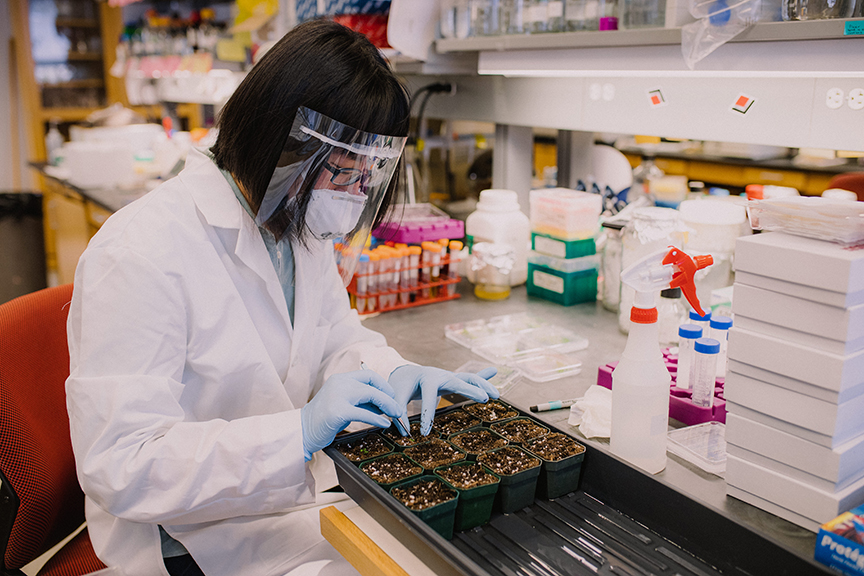
“We switched off the autophagy genes and created mutant plants that could no longer conduct autophagy,” Bassham said. “Then we exposed the plants to heat, drought and nutritional deficiencies to see what would happen.”
The mutated plants grew fine under normal conditions. But after stressing the plants, they quickly died. Bassham’s experiments left no doubt that autophagy was critical to plants surviving environmental stress.
“Diane was one of the first plant researchers to establish a direct connection between plant stress and autophagy,” Yin said. “This is settled science now, but it wasn’t before her team conducted these experiments. These discoveries sparked great interest in these processes and now researchers all over the world study how plant stress affects autophagy.”
Bassham’s group also experimented on normal Arabidopsis plants without mutations. After stressing the plants, the microscopic signals of autophagy were detected almost immediately.
“Understanding how plants cope with stress is especially important as the world deals with climate change, extreme weather and its impacts on crops,” Yin said. “Part of Diane’s legacy is that she has inspired many students to address climate change issues related to plants and weather-related stress.”
Inspiring future generations
Nearly 80 undergraduates, graduate students and postdoctoral researchers have worked in Bassham’s lab during the last two decades. Some now work for private corporations. Several have followed in Bassham’s footsteps and are faculty researchers with their own labs. A growing number are interested in applying autophagy to climate change research.
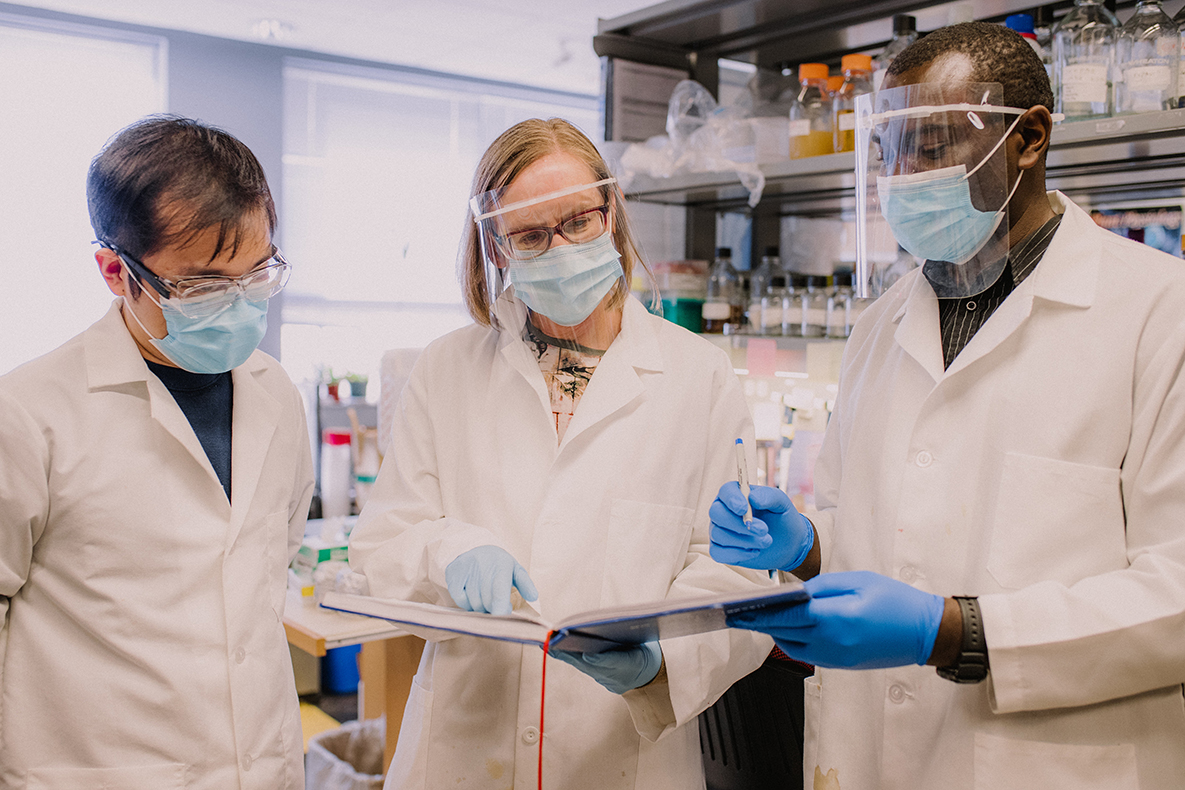
“There is a great deal of interest in developing plants that can endure extreme conditions and I imagine that many of my students will go on to tackle these issues,” Bassham said. “It’s an important goal of this research to encourage progress on climate-related work.”
Last summer, Jie Tang (Ph.D. ’22 plant biology), a researcher in Bassham’s lab, trekked through tall rows of corn in Iowa State’s test fields to study how autophagy helps corn endure extreme heat. He gathered leaf samples during various temperatures, including a day in July when temperatures soared to 104 degrees.
“Diane has been an incredible mentor and I hope to do postdoctoral work in plant biology related to climate change and someday conduct research in China,” Tang said.
“Part of Diane’s legacy is that she has inspired many students to address climate change issues related to plants and weather-related stress."
Zach Kazibwe (Ph.D. ’22 genetics and genomics), who studies ribosomal RNA in the Bassham Lab, says that Diane’s impact on his career began years before he stepped foot in her lab.
“I remember reading about Diane’s research when I was a college student in Uganda,” Kazibwe said. “Part of my motivation for coming to Iowa State was Diane’s reputation in autophagy research. I knew that working with her would be a great opportunity and I have learned so much from her.”
The admiration is a two-way street. Bassham is deeply appreciative and proud of the students who have worked in her lab.
“If it wasn’t for my team, I wouldn’t be able to conduct this research, which truly is a group effort,” Bassham said. “They drive the projects forward and have contributed greatly to the lab’s success through the years.”
Moving forward
When she isn’t mentoring her students or conducting experiments, Bassham is planning which aspects of autophagy she’ll research next. She’s always on the cusp of astute hunches and new projects that could yield the next big breakthrough.
“Sometimes it takes quite a while before you see the benefits of studies in biological research,” Yin said. “But if we believe in and support those ideas, eventually we can harness incredible success, much like Diane has.”
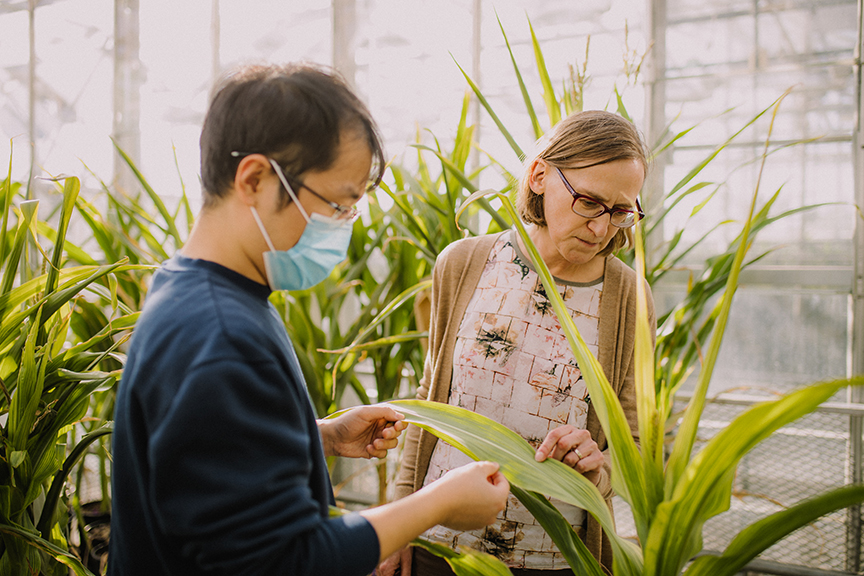
Interest in plant autophagy has grown since Bassham witnessed it through a fluorescence microscope. Thousands of researchers now study autophagy and the Bassham Lab continues to probe the mysteries surrounding this complex plant process.
“I’m excited about the progress that our lab has made during the past two decades and now I’d like to understand more about the pathways in plants that control autophagy,” Bassham said. “I’m looking forward to investigating many questions about autophagy that remain unanswered.”
